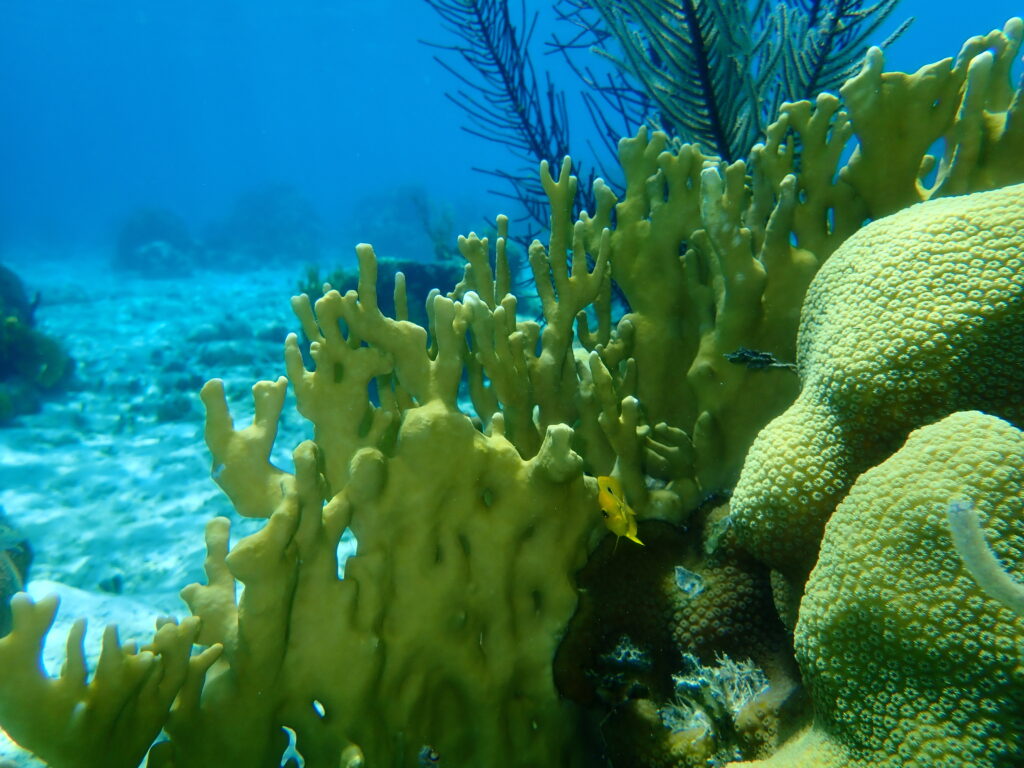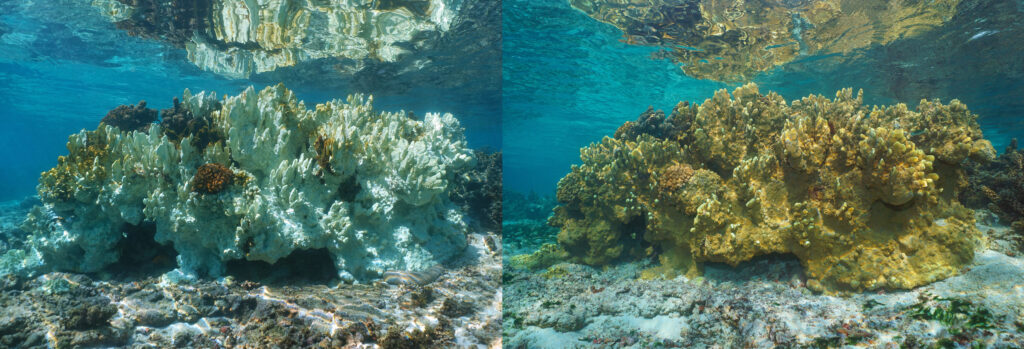Coral reefs are the most productive marine ecosystem known, providing essential habitats and shelters for fish and other organisms. Additionally, they help protect coastlines, support economies, provide important food sources for local fisheries, and so much more. Coral reefs are ecologically essential—but are continuing to vanish. Fire coral (Millepora) brings new hope to this marine crisis due to their unusual ability to grow in two forms and survive under various habitat stresses.

What Is Fire Coral?
Fire coral has been around for millions of years and is most commonly found in sunny, shallow reefs. They tend to grow in tropical and subtropical waters with many thriving in different areas of the Caribbean Sea, one of the planet’s most biologically diverse ecosystems. Fire coral resembles typical stony corals but has a wicked sting that can cause burning skin reactions, reflecting their relationship as a close relative to jellyfish.
The Best of Both Worlds
Fire coral has the unusual ability to grow in two different forms, giving it the best of both worlds and an edge over other Caribbean corals. It can grow as trees with a stem and branches sprouting upward or as sheets which appear as a flat coating across rocks and other surfaces.
The Caribbean reef has been plagued by many forms of destruction including global warming, disease, hurricanes, and an overabundance of algae. When the environment is on the calmer side, the reef begins to crowd and fire coral sprouts into its branching tree form to exploit sunlight and plankton in the water. This allows it to thrive in tighter spaces and for organisms to inhabit and feed off of the coral.
Although fire coral may lose its branches once a storm hits or other factors destroy the macroalgae, it can quickly move in and encrust surfaces, taking another form—sheets. These conditions cause a lot of destruction to other reef species but allow more room for fire coral to further expand in its sheet form. Thus, in a world with frequent environmental stresses and tough competition for marine-life space on the bottom, fire coral holds steady and has even increased slightly in abundance over time.
The Future of Coral
Coral species are getting rarer and rarer. It’s estimated that 50% of the world’s corals have already vanished. Despite its environmental resilience, fire coral remains susceptible to other damaging factors. Marine heat waves are becoming more frequent and intense, and coral bleaching persists as the leading cause of coral reef deaths worldwide.

At Promega, we are focused on a long-term view of wildlife conservation. One of the ways we capitalize on this commitment is by funding and supporting the Revive and Restore Catalyst Science Fund. The Catalyst Science Fund contributes to the exploration of biotech solutions to environmental challenges worldwide, like those of coral reefs. In fact, marine biologist Steve Palumbi was awarded the first Science Fund grant which he and his team at Stanford University exercised to investigate the genomic “stress trigger” associated with coral bleaching. The team anticipates valuable findings for the future of coral reefs as they aim to control responses to heat stress and identify heat-resistant corals in breeding programs.
Check out Revive and Restore’s Advanced Coral Toolkit for more current and completed coral projects.
Related Posts
Riley Bell
Latest posts by Riley Bell (see all)
- Bringing Science to Life: How Art and Sustainability Shape Our New Trade Show Booth Design - March 31, 2025
- Genetic Symphonies: Building Hox of Life - December 17, 2024
- Exploring the World Through the Promega and Eppendorf Family Exchange Program - November 19, 2024
